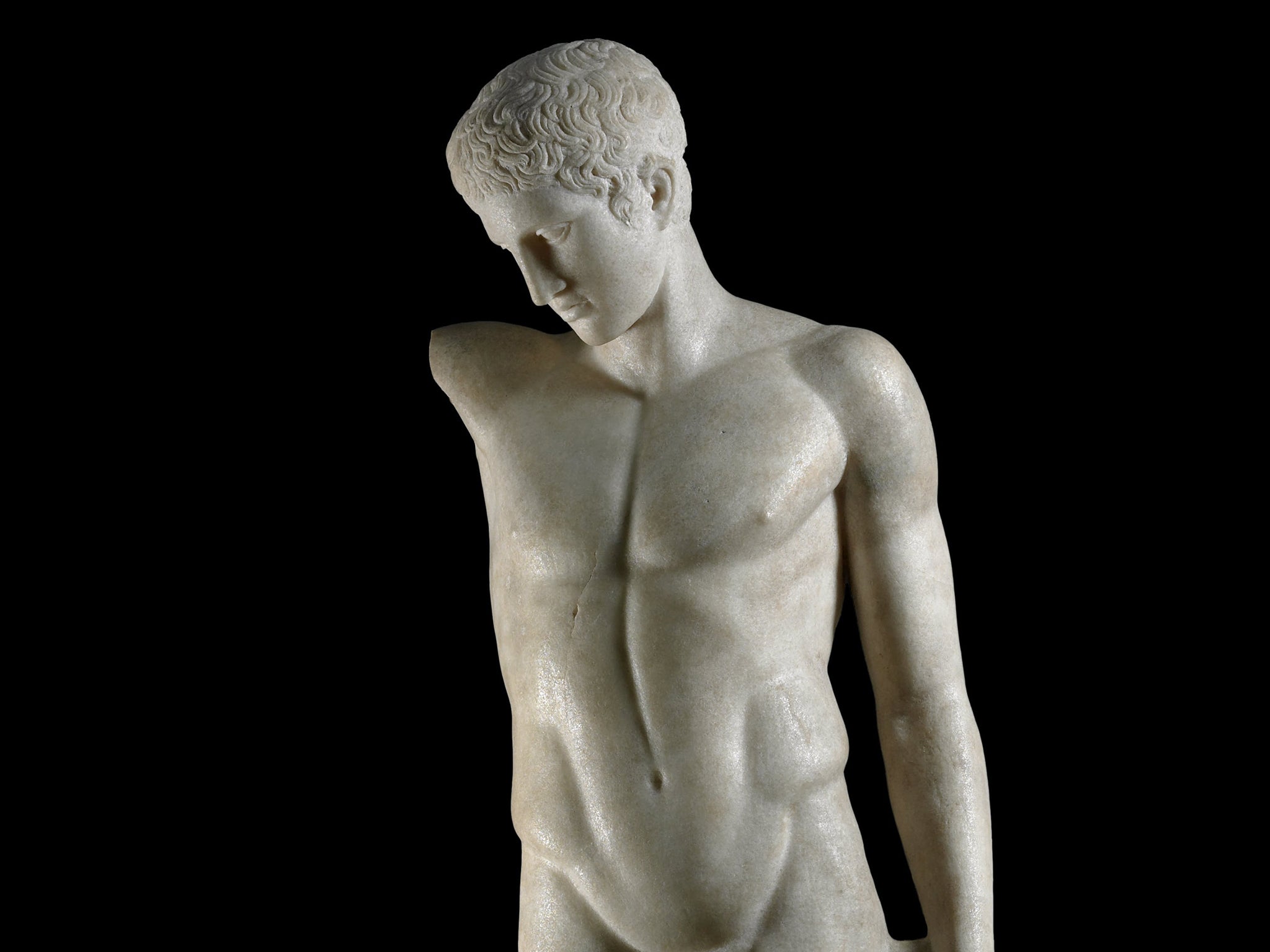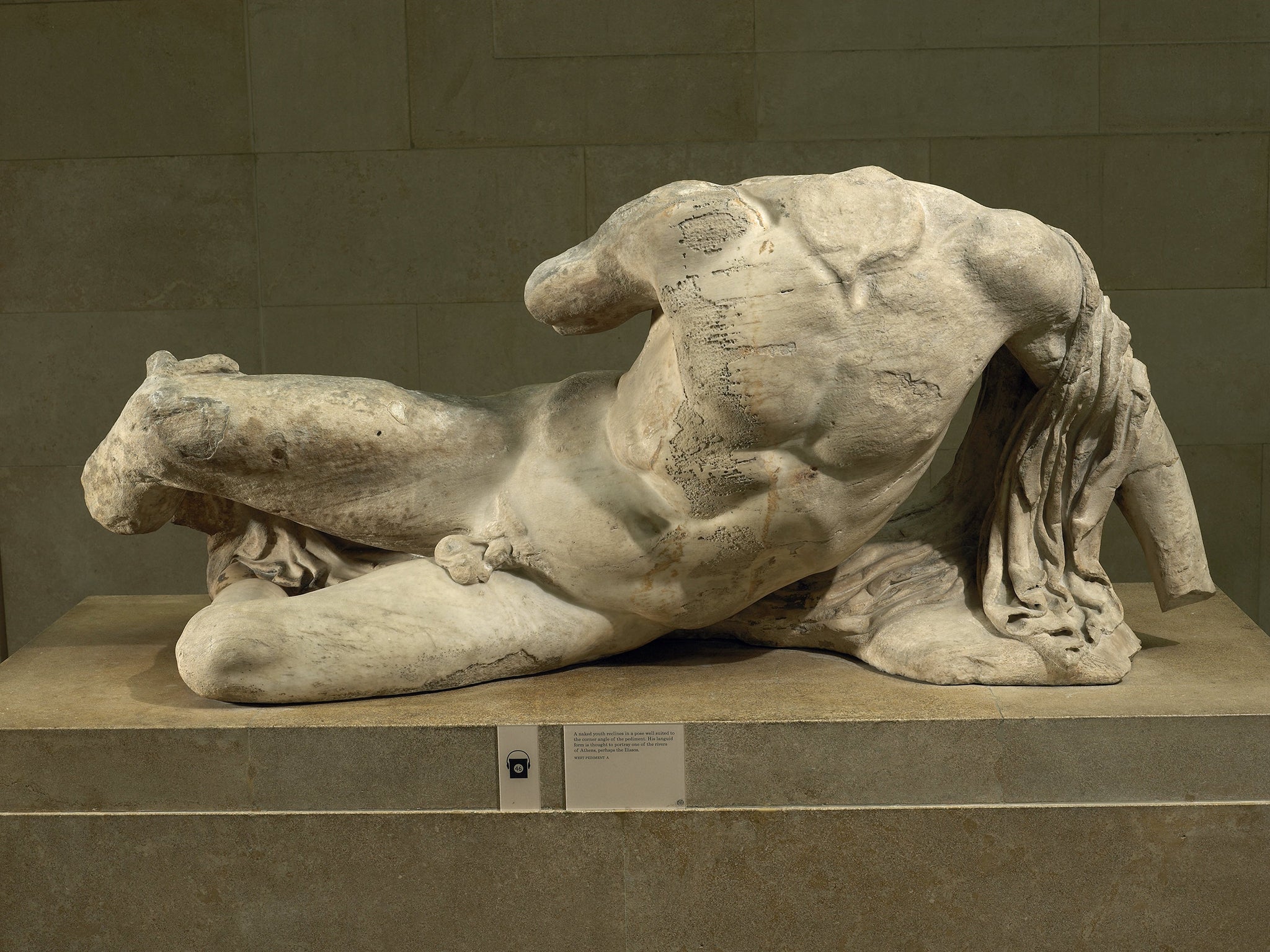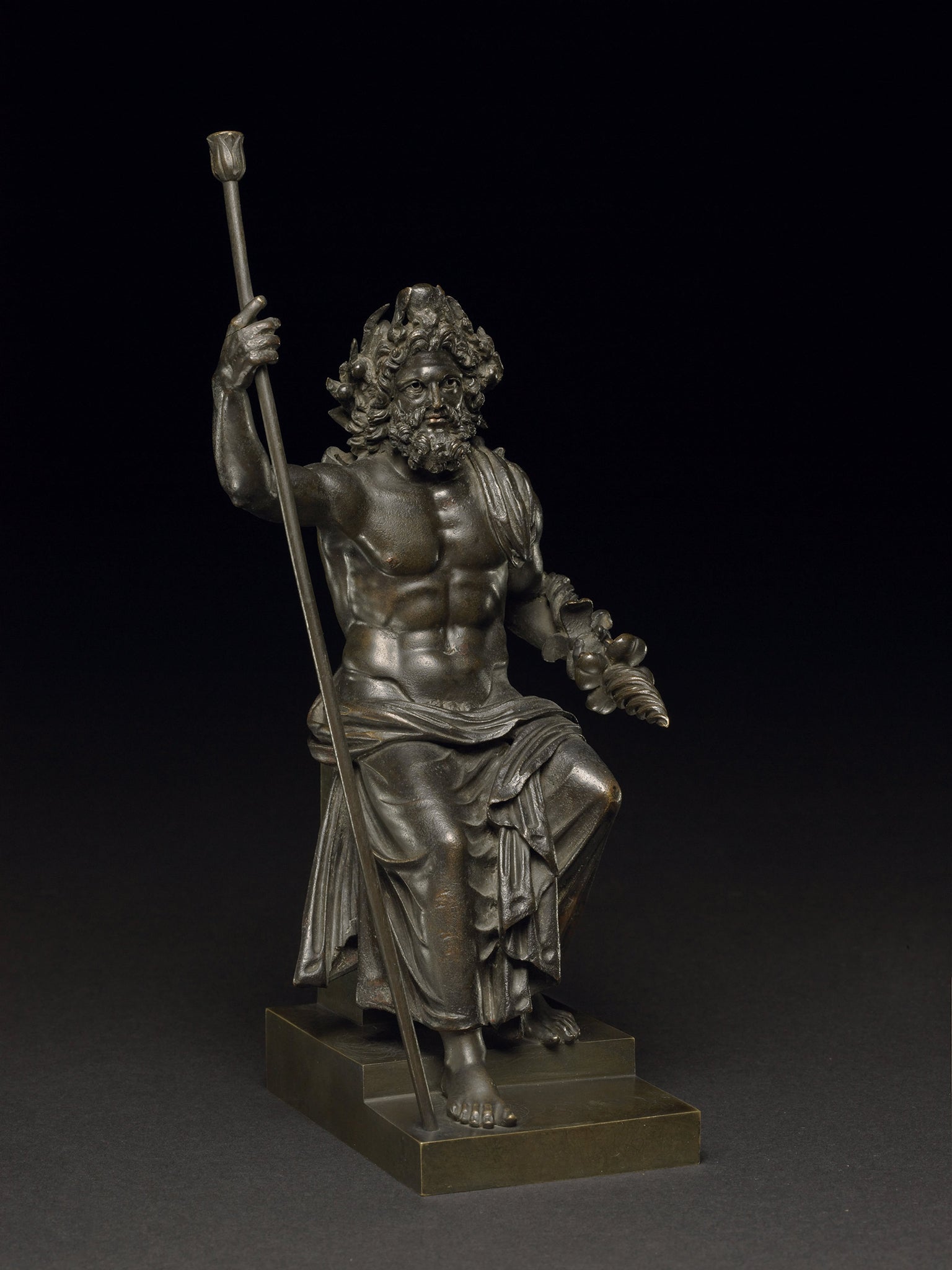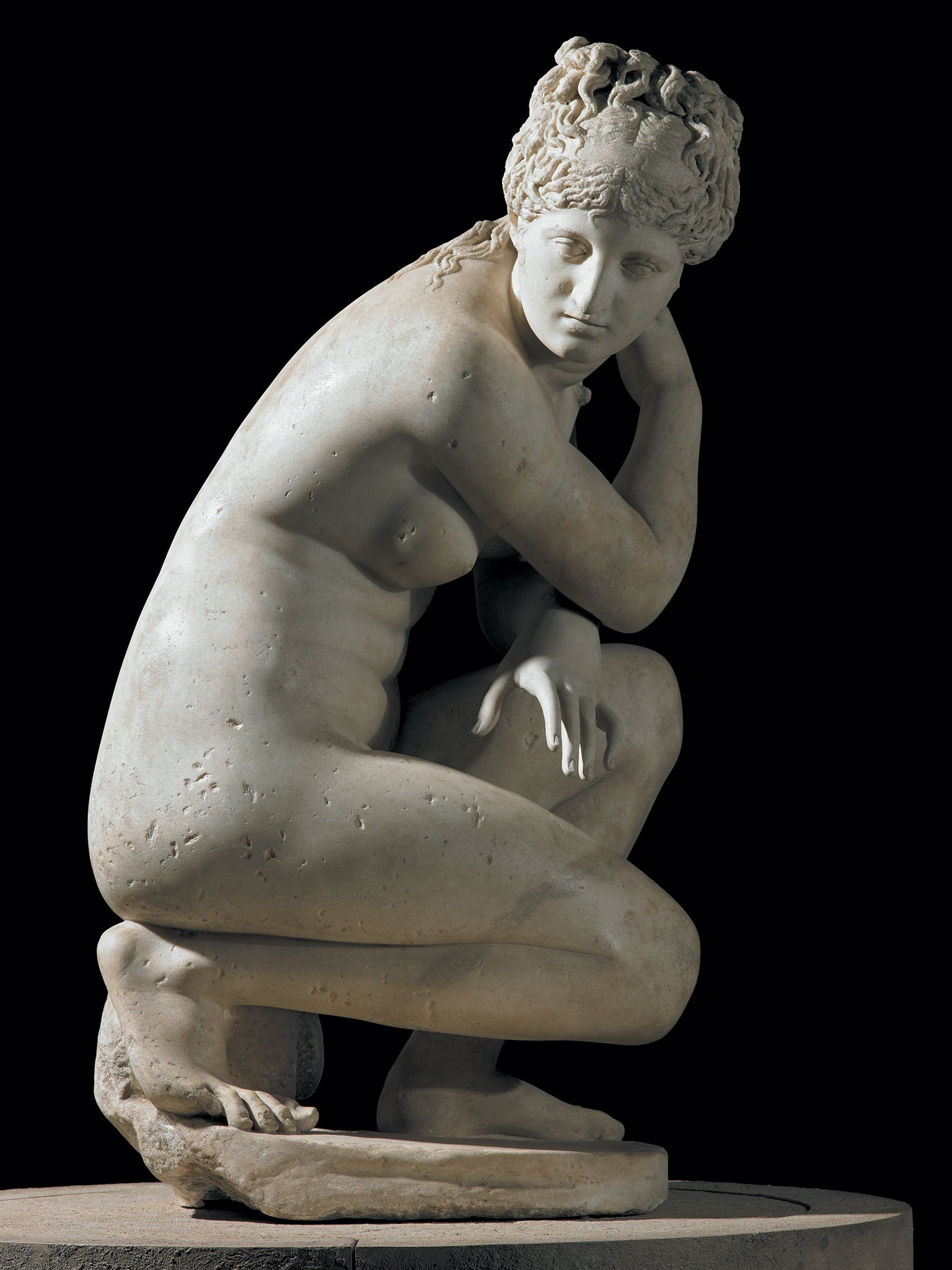Defining beauty: the Body in Ancient Greek Art at the British Museum gives visitors quite an eyeful
The Greek physique is the subject of a new British Museum show, here are some of the ravishing highlights

From fitness magazines to dating apps, you don’t have to look far for evidence of our modern society’s obsession with the body beautiful. But for all the think-piece chatter, this veneration of the toned and chiselled is hardlya 21st-century phenomenon: get a load of those Ancient Greeks, as you can at the British Museum’s spring blockbuster exhibition Defining Beauty.
Bringing together around 150 pieces from the Museum’s own collections and beyond, it will show how, from the fifth century BC on, Greek sculptors revolutionised the representation of the human form. Channelling the humanism that was at the core of the new Athenian democracy – the idea, as Protagoras said, that “man was the measure of all things” – they sought to celebrate the human form by depicting it in a radically naturalistic but idealised state.
And in doing so, lost the clothes, of course: the Greeks’ attitude towards naked male flesh, at least, was “exceptional and unique” within the ancient world, as curator Ian Jenkins points out. Rather than maintain the traditional associations of nakedness with shame and vulnerability, they re-conceived it as heroic. “When a young man took off his clothes in the gymnasium, he wore the uniform of the righteous,” says Jenkins.
Indeed, if today’s body-beautiful culture seems predicated on envy and aspiration, the exhibition’s marble, bronze and terracotta specimens will leave visitors in rather more sublime a state, hopes Jenkins. “The Greeks placed man at the centre [of their world] and elevated him to be uniquely self-determining … and the body is the illustration of that conviction … I want [people] to come out feeling more intelligent and beautiful than when they went in,” he says.
And if that’s not incentive enough, then here, as an appetite-whetter, are six of Jenkins’s pulchritudinous highlights:
1) Figure of a River God, (circa 438-432BC) – one of the Parthenon Sculptures or ‘Elgin Marbles’

I have put this first among the six, because it is a Greek original; many of the others are Roman copies. It comes from the west pediment of the Parthenon, and is thought to represent the river Ilissos. To get a figure to fit the space of a pediment’s raking cornice, you have to make it miniature or have it recline, and once you’ve got the figure to lie, it becomes a good subject for representing water, as it “flows” into the corner. The piece has about it that shifting indefinable quality of breathing vitality; cold marble is made lissom and languid by a process of almost magical alchemy and turned into warm flesh and flowing drapery, which is then converted again into water.
2) Bronze statuette of Zeus (1st-2nd century AD)

This representation of the great Lord Olympus, some 20cm high, is an extraordinary piece: macho, commanding, erotically inspiring, all the things that the male body can be. It came into the British Museum collection in the mid 19th century having been in the collection of Dominique Vivant Denon, the first director of the Louvre. It is the quality of the piece that is so remarkable: as a French commentator said at the end of the 19th century, one could imagine in this statue that it were a colossus: it has such a major impact on the eye and when you look at it close up, it looks as though the detail could only be achieved on something of a much greater scale.
3) Aphrodite crouching at her bath, aka Lely’s Venus (2nd century AD)

She’s a truly exceptional piece of carving and composition who represents the danger of getting too close to goddesses: the idea is that you approach her from behind and you see her broad flat back, her head looking forcefully down over her right shoulder, and her right arm reaching over her left shoulder and seeming to play with our attention and beckon us to move closer. So we do first a quarter turn, and then a three-quarter turn, but finally our expectations are denied because we do not get an intimate view of her sexual parts and instead what we get is an intimidating stare. A piece that seems at first welcoming is in fact, very threatening.
4) Marble statue of a boy athlete, aka the Westmacott Athlete (1st century AD)

This representation of a young athlete fulfils an idea of the beautiful male athletic body that is much spoken of in texts of the time. He is the epitome of youth: standing firm but looking away from us demurely. This is a copy of a lost Greek original from around the time of Socrates, and I like to think of him as from Plato’s Charmides, a dialogue in which a beautiful boy is admired and interrogated by Socrates, who determines that he is not only beautiful but morally sound: he is drawn even more to him because he demonstrates “charis” or grace. You can also see here how the sexuality of the athletic nude is reduced by the downsizing of the genitals – and there’s no thrusting as you find with the goal-scoring footballers of today.
5) Statuette of a veiled and masked dancer, aka the Baker Dancer (3rd-2nd century BC)

This is an object which I first fell in love with when I went to The Met in New York aged 24. It’s a virtuoso, almost dazzling display of modelling, first of all in clay and then cast in bronze, of a female dancer using her drapery to suggest the body beneath, which she’s clearly very proud of. It’s a great example of the use of drapery as sexual innuendo by sculptors in a society where the depiction of the female body was more problematic than the male.
6) The Belvedere Torso (1st century BC to 1st century AD)
‘Defining beauty: the Body in Ancient Greek Art’ runs at the British Museum from Thurs to 5 July, sponsored by Julius Baer (britishmuseum.org)
Join our commenting forum
Join thought-provoking conversations, follow other Independent readers and see their replies
Comments